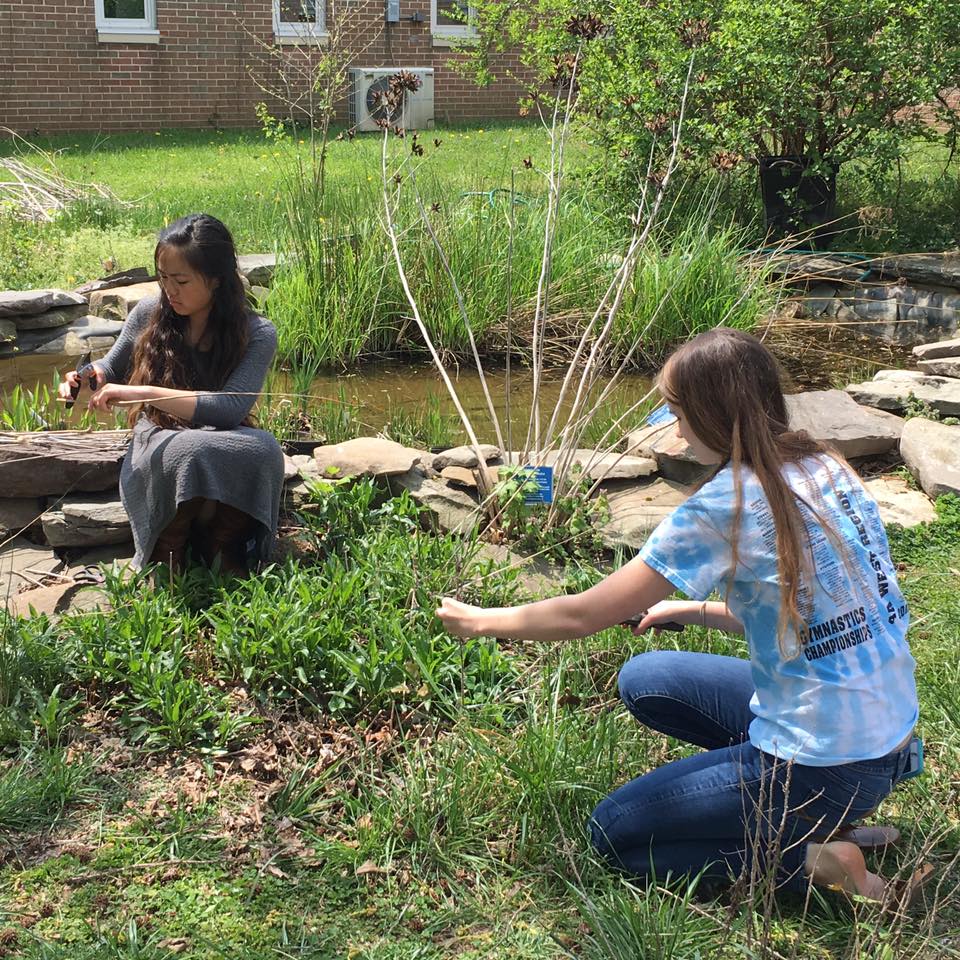
Thursday, members from a variety of service clubs like National Honors Society, National Science Honors Society, Envirothon, Key Club and Earth Force met after school in the Native Species garden as part of a cleanup effort in celebration of Earth Day.
“Some people aren’t a part of any club, they just come here because they want to help,” event facilitator Barbara Brown said.
Some of the work done in the garden included weeding flower beds, planting vegetables in the raised vegetable garden and mulching.
“After they [finish weeding] they are going to lay down newspapers and then put a thick layer mulch on top of it,” Brown said. “The mulch keeps the weeds down and newspapers make it harder for the weeds to grow, which makes the mulch job last longer.”
Students who came to participate checked in with a sign in sheet, which kept track of how many hours each student worked in the garden, which was useful for students who needed to accumulate service hours.
“I think it’s cool we have a native species garden, because we get to see these plants during a school day, which is pretty relaxing,” freshman Kari Eskeland said. “This event is an opportunity to work and an opportunity to be a part of something beautiful.”
A group of students left the Native Species garden and went to the portion of Pimmit Run that is behind the back practice fields with Danielle Wynne, who is a freshwater ecologist for the Fairfax County Stormwater Planning Division. Wynne is partnering with this group of students in order to monitor the stream and is going to meet with them every few months to continue ongoing stream monitoring efforts.
“One of the programs we’re doing right now includes coming up with a way to monitor floatables in streams, with floatables being trash of any kind and anything that shouldn’t be in the stream,” Wynne said. “We’re looking at different partnerships in order to get an idea of how many floatables are in these streams and also to go one step further and figure out how we can prevent them from getting into the streams in the first place.”
Wynne supervised the group in filling in data sheets about the specific types of trash both in and around the stream, and spoke about what the varying types of debris signified.
“What we’re going to end up doing is continue to use this as a monitoring location, but expand it to make it more of a teaching tool. We’d like to partner with the Envirothon team, as well as any other groups that would be more interested in the terrestrial aspect to talk about the management of invasive species,” Wynne said. “We may bring in Urban Forestry to do an assessment of the trees and identification of the trees here as well as looking as what’s dying or diseased.”

